
Payroll seems straightforward. But in construction, the larger your business is, the more complex (and time-consuming) payroll can be.
What are the main problems with payroll?
Most payroll errors fall into two general categories: Inaccurate time data and manual process errors.
Inaccurate time data
There are many reasons time is misreported by employees, including:
Miscalculations
Miscommunication or misunderstanding of the time tracking process
Intentional time theft
Manual process errors
Your payroll team may also make errors, especially if they’re manually entering hours into an accounting system. They may misinterpret or misread data or simply enter it incorrectly by mistake.
The cost of inefficiencies
In a 2022 study, global accounting firm Ernst & Young reported that companies make an average of 15 mistakes per payroll period, costing around $78,700 per year per every 1000 employees.
Companies make an average of 15 mistakes per payroll period.
Lack of standardization
Inefficiencies like a lack of standardization, outdated tools, or disorganization increase the risk of errors exponentially.
For example, if some employees submit handwritten time cards while others use spreadsheets, an admin will need to collect, organize, and combine that data manually. This takes more time and is more error-prone than using a single, standardized method.
Time pressures
Payroll takes significant time and effort even when it goes smoothly—and it’s on a strict deadline. If your process is inefficient, admins may feel rushed, leaving more room for error.
Best payroll practices
Follow these best practices to reduce inefficiencies:
Establish a standardized method (or methods) for tracking time
Prioritize ease of use
Clearly communicate your policies
Utilize digital solutions
1. Establish a standardized method (or methods) for tracking time
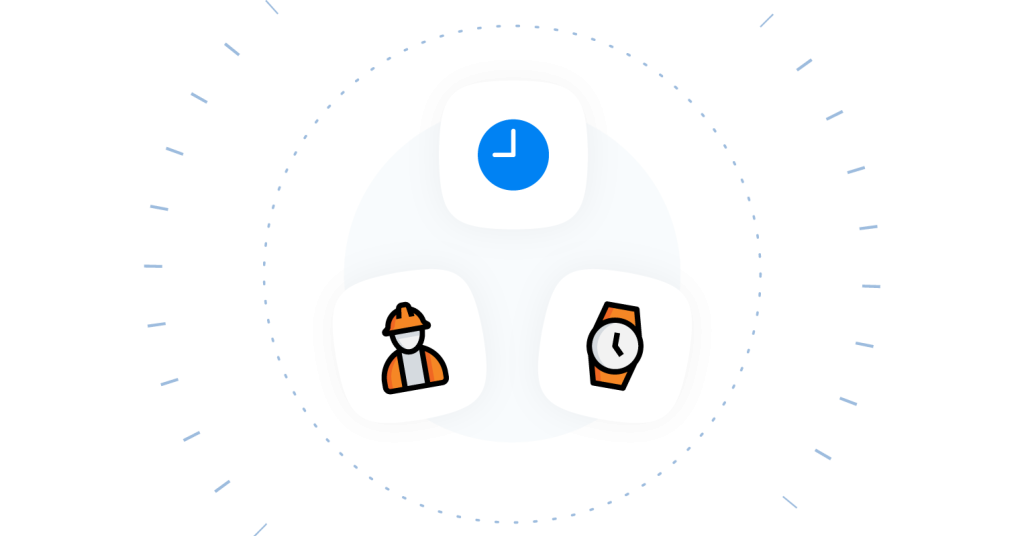
There are many different ways to capture hours worked on the jobsite, and no way is automatically better than the others. Choose what works best for your business based on the size of your workforce, the span and complexity of your projects, and your availability of resources.
The most common options are:
Time cards - Physical or digital documents completed by individual workers or their supervisors
Shared time clock - A physical device on the jobsite that all employees use to clock in and clock out
Mobile time clock - An application that employees download to track time on their own individual phones or tablets
Each of these options has different pros and cons. Whether you use a single tool to track time or combine multiple methods, your goal is to collect the same time data from all employees in a standardized format that can be easily processed by your payroll team.
Recommended Read
The Ultimate Guide to Construction Time Cards
Learn how to improve the way you track time on every project.
2. Prioritize ease of use
With different hourly rates, pay types, cost codes, and other complexities, payroll at a construction company can get complicated.
Highly granular data about how time is spent on the jobsite can be a major benefit to your business, but it’s also unreasonable to expect employees in the field to spend more than a few minutes tracking time each day. Likewise, payroll admins shouldn't have to spend countless hours setting up and processing payroll.
Consider the needs of every user and provide tools that are simple to use and easy to understand for both sides of your business. Workers should easily be able to track time to the correct cost codes and approve their hours, while admins can adjust settings per project specifications, quickly collect and review time data, and access holistic views to better monitor performance.
Payroll is an essential process that recurs on a regular basis. It is worthwhile to invest time and resources into making it as smooth and streamlined as possible.
3. Clearly communicate your policies
In addition to considering ease-of-use when you establish your payroll process, you also need to properly train employees on how to track and submit hours worked to see better results and reduce errors. Make sure the proper way to track time is a part of new employee orientation, and regularly provide reminders or updates to existing staff as needed.
If you clearly communicate the rules and obligations, you can better hold your employees accountable for providing accurate time data.
4. Utilize digital solutions
In today’s world, there’s few companies that can operate at maximum efficiency while still using pen and paper or spreadsheets to track time. For medium, large, and even most small businesses, dedicated digital time tracking solutions are key to improving the speed and accuracy of payroll.
Instead of being recorded manually, time data can be quickly entered on mobile devices in a standardized format, and controls can be enabled so that the correct cost codes, pay types, and rules for breaks are automatically calculated. Payroll admins can also connect digital time data directly to the business’s accounting software, eliminating the need for duplicate data entry.
Not only do digital solutions make time entry and data collection easier and more accurate, they help businesses reduce intentional time theft with features like GPS location tracking and photo identity verification.
How Raken perfects payroll
Raken’s web and mobile app makes payroll a breeze for both your field and office crews.
Easy, flexible mobile time entry
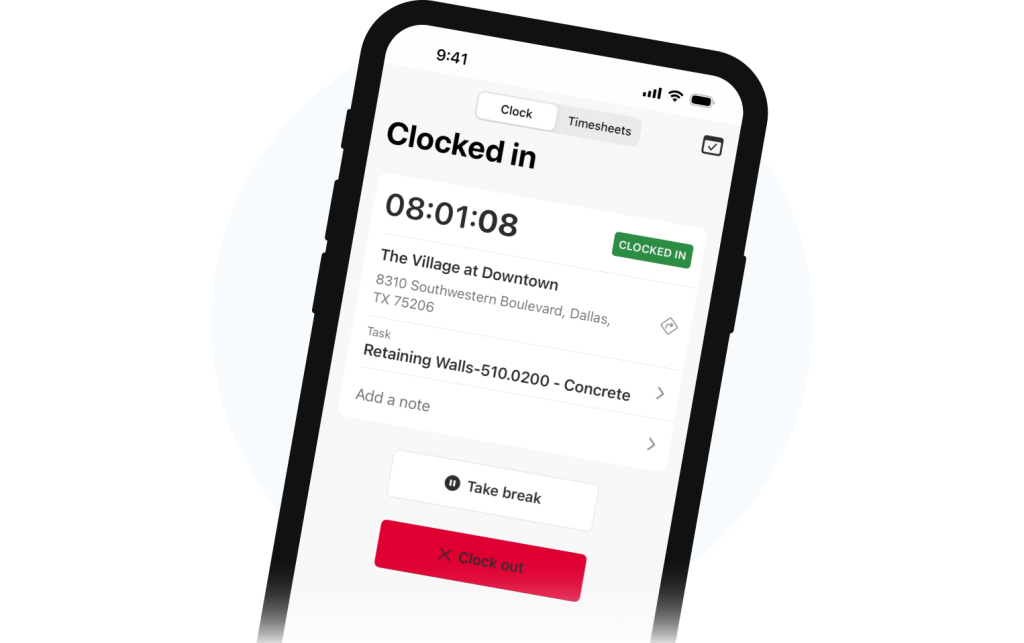
Raken offers three flexible ways to track time in the field. Choose supervisor-led time tracking with digital time cards, enable our time clock kiosk on a company device, or invite workers to download our mobile time clock.
Every option is designed for ease of use, so accurate hours can be easily captured, submitted and approved within minutes. Track breaks according to local regulations, automatically account for different pay types, and be sure workers are submitting hours for the right tasks.
Time theft prevention
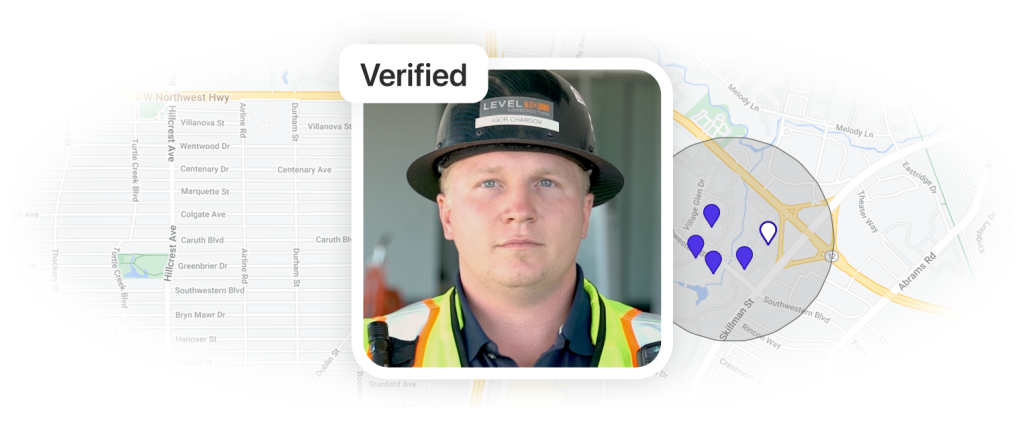
Both Raken’s kiosk and mobile time clock are equipped with GPS location verification and AI photo ID so you always know employees are clocking in when and where they should be.
You can also set up custom questions for both clock in and clock out that verify each worker is aware of proper procedures on every jobsite.
Better visibility
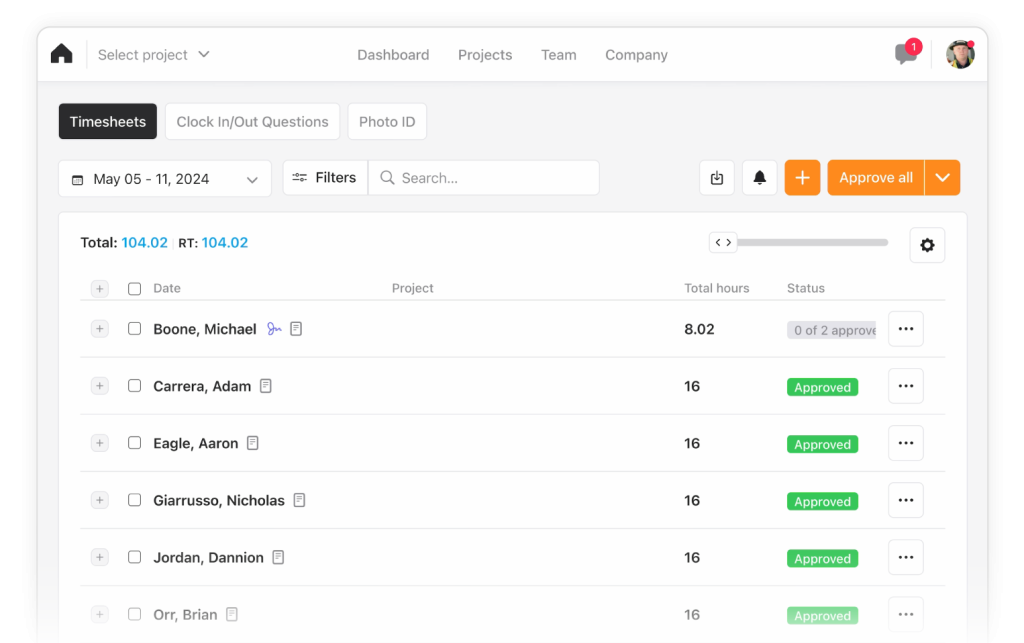
Raken organizes your time data into easily-digestible timesheets that show you how different cost codes are performing at a glance. You can:
View time spent on each cost code
Compare hours worked against project schedules
Measure the financial impact of overtime
Accurately assess performance at the project or company level, both in real-time and on a historical basis to keep current work on track and better plan future projects.
Seamless accounting integrations
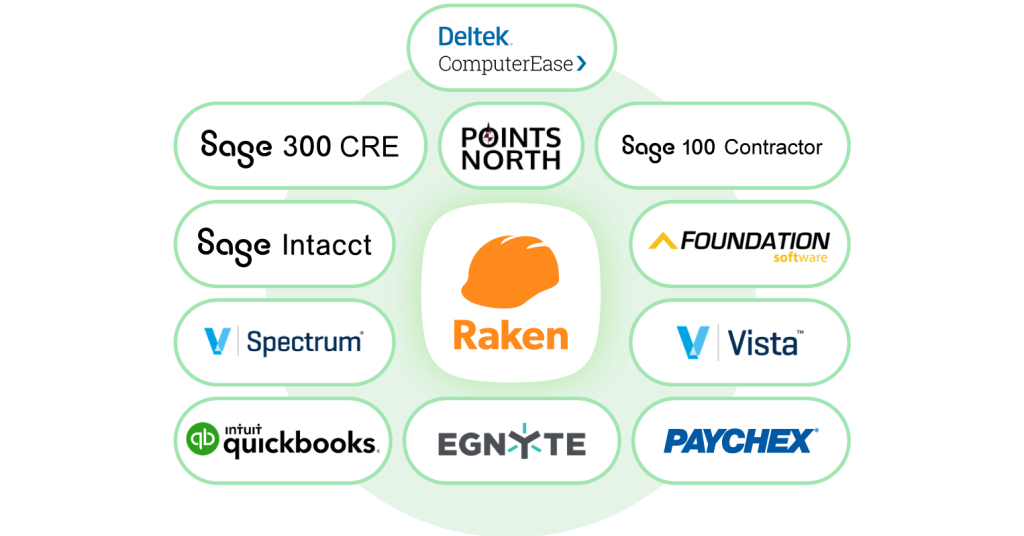
Raken integrates with industry-preferred accounting solutions like Sage, Foundation, QuickBooks, and more to eliminate duplicate data entry and save your payroll team valuable time for more important tasks.
Recommended Read
How Acme Construction Uses Raken to Capture Time and Daily Progress
See how Raken works for payroll in the real world.
Why improve your payroll process?
The main reasons to invest in your payroll process are:
Saved time
Better employee retention
Actionable insights
Saved time
With standardized processes and more streamlined workflows, you’ll spend less time on data entry and more time on impactful tasks.
Employee retention
Getting paid the right amount every week makes for happier employees.
Actionable insights
Project managers and other stakeholders can use more accurate data to make informed decisions about budgets, hiring, and scheduling.
Better, faster payroll with Raken
Capture accurate time data and process payroll faster with one easy-to-use web and mobile app.